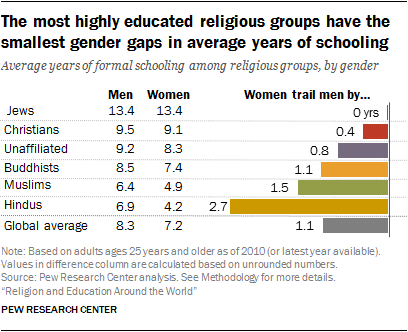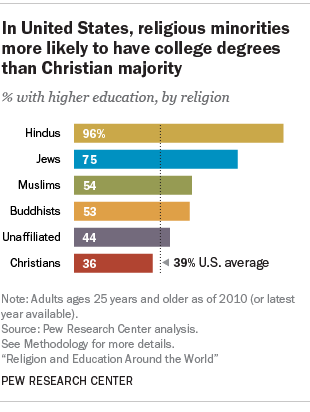Christians less educated than religious minorities, study says
December 18, 2016
According to a Pew Research study, religious minorities in the U.S. are more likely to have a higher education than people in the Christian majority. The study, based on census data from 2010 and surveys from 151 countries, observed education gaps among the world’s major religions.
Among the 267 million Christians in the U.S. in 2010, only 36 percent had a postsecondary education. Jews in the U.S. were twice as likely as Christians to have a college degree, and Hindus were three times more likely. Buddhists, Muslims and those unaffiliated with a religion were also more likely than Christians to have a college degree, making Christians the least educated religious group in America.
According to the researchers, the education gaps resulted from immigration policies that favor the educated, making religious minorities in America seem quite exceptional.
There was also a noticeable difference in educational levels between religious and non-religious citizens.
“The higher the level of education in a country, the larger the share of people with no religion tends to be,” said Conrad Hackett, the lead researcher.

Worldwide, Jews were the most highly educated group with 13.4 years in school on average, followed by Christians with 9.3 years, religiously unaffiliated with 8.8 years, and Buddhists with 7.9 years. Hindus and Muslims were the least educated religious group, according to the study, with 5.6 years of education each. Geography is expected to play a major role in education levels in these groups.
Gender gaps in education differed among religions, with Hindu women receiving an average of 2.7 years less education than men and Muslim women receiving 1.5 years less education. Christian women had 0.4 years less and there was no gender gap among education in Judaism.
To see the full report in The New York Times, click here.
































































































































































